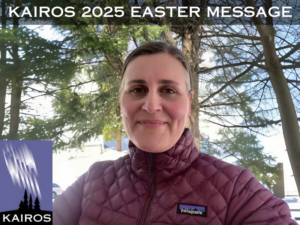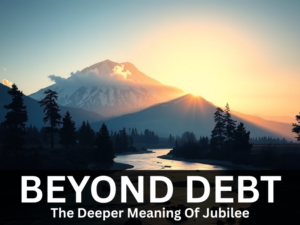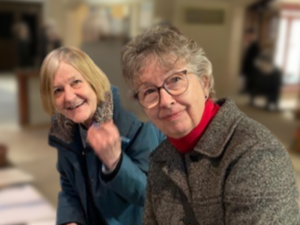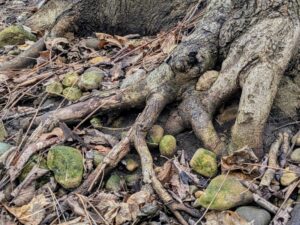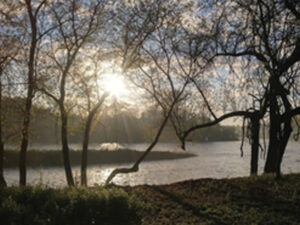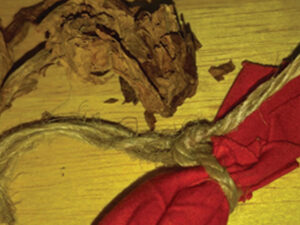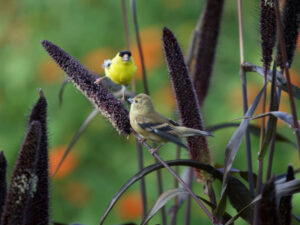Gratitude for the Fish and the Birds
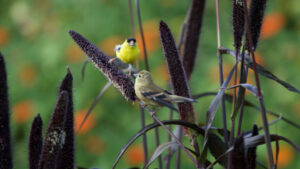
Deuteronomy 18:15-20; Psalm 111; 1 Corinthians 8:1-13; Mark 1:21-28
By Henriette Thompson
“And God said, ‘Let the waters bring forth swarms of living creatures, and let birds fly above the earth across the dome of the sky.’ …’And God saw that it was good… (on) the fifth day.’” (Genesis 1:20-23)
I commune with birds and fish on an almost daily basis. There is a heritage Mennonite farm a five-minute walk away with a barn loft from which a kettle of turkey vultures launches their aerial ballets. Nearby is Critter Creek, a small tributary of the Grand River. I scan the creek for a glimpse of a Great Blue Heron that fishes up and down the creek. From a little bridge, I watch brown trout minnows in rocky pools multiply, smolt and then migrate downstream.
Just beyond the Martin Farm stretch five kilometers of walking trails along the Grand River. For millennia, this upper section of the Haldimand Tract was the traditional hunting grounds of the Anishinaabe, Neutral and Haudenosaunee peoples. The entire Tract – six miles on either side of the Grand, from source to mouth — was deeded in 1784 in perpetuity to the Six Nations of the Grand River. Occasional murmurations of crows, the rare sighting of a rose-breasted grosbeak in early summer, and the grandeur of an osprey perched high on a leafless branch eating a fish, its tail dangling, make my heart sing. “To all the fish life, greetings and thanks. …To all birds, large and small, joyful greetings, and thanks,” offers the Haudenosaunee Thanksgiving.
Yet how we encounter each other in wild spaces is subject to arbitrary decisions about difference, imposed through European colonization on this land. As I wander the trails along the Grand River delighting in the lifeforce of creation each season, with few exceptions, the walkers, runners, and cyclists are white. If I were to assume the gaze of the turkey vulture or the brown trout, I might wonder why so little human diversity is found along the trail?
James Perkinson, theologian activist and educator suggests: “…if we are the ones who have been doing the dominating, the colonizing…then what our responsibility comes down to is narrating – and embracing – an ‘ending.’ How do we end and end well?” In other words: how do white people de-centre white voices and decolonize white property and position in the wilds (my emphasis)? How do we say farewell to the story we have been living in?3

Black Canada Hike partners Jacqueline L. Scott and Judith Kasiama are changing that story: “Nobody looks like us – two Black women – in the classic adventure stories. Instead the tales are filled with white men and women on grand tours of the wilderness. They did these because they were fun, a challenge, or a quest to walk in the footsteps of bygone explorers. It seems to me there was a subtext to these grand treks – people were recreating colonial fantasies of exploring, mapping and ultimately conquering exotic lands.”4
While there is growing attention to the establishment of Indigenous Protected and Conserved Areas in Canada where Indigenous-led land stewardship and governance are practiced5, there is little visibility of Indigenous presence on the upper Haldimand Tract. Historic colonial land grabs have relegated the people of the Six Nations to an area less than one-tenth of the Tract where the struggle for clean drinking water, nurturing children in Haudenosaunee ways, and engaging in the broader struggle for self-determination, equity and respect require tremendous collective time, energy, and focus. There, the effort to pass on the knowledge and use of medicinal plants from forests and fields persists. There, gratitude for the fish and all birds, large and small, is offered daily.
The wilds of Turtle Island call white Christians to relinquish a destructive narrative, work our way out of the thickets of settler colonialism and recover the wisdom stories in our ancient texts. Listening to Indigenous voices and muting ours while respecting and implementing Indigenous rights to the land will help us move toward reconciliation. And we will know that it is good.
Henriette Thompson delights in the marvellous web of life along the central Grand River on the Haldimand Tract (1784), aka Waterloo, ON. She strives to honour the First Peoples — Neutral, Anishinaabe and Haudenosaunee — and the treaties of this land, and to dismantle white privilege in herself, in Anglican and Lutheran church communities, and more widely.









